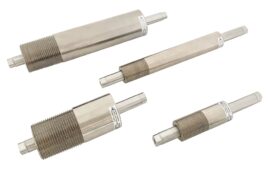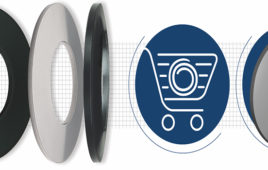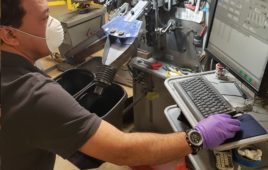Edited by Mike Santora
Evaluating spring components for an industrial application can be a challenge. A spring needs to improve the performance of a product in a cost effectively. Here are a few considerations for choosing the best spring for a given application.
Quality
Depending on the application, less expensive materials might be an option. However, springs for specific industries like the medical or defense sectors require methods and materials that are more costly because of quality standards and the end use of these springs.
For example, micro springs in surgical staple guns and other medical devices should use stainless steel (often austenitic and precipitation hardened) to maintain the durability, and cleanliness needed. While stainless steel costs more, its superior cleanliness often makes it a good choice for a number of applications.
Cost
Cost is determined by a number of factors. A stock spring will be more affordable than a custom spring; however, a custom spring ensures the right specifications, especially in unique application scenarios.
Many times, a designer may require not only a spring, but also a custom spring assembly. Working with a manufacturer capable of doing both is more cost effective. A few factors that may affect cost for design and manufacturing include materials, time, tolerances, space allowances and any specialized tooling. As mentioned previously, different materials are more effective against corrosion and other problems, and costs will vary.
Wire diameter and other dimensions need to be exact as well. Consulting with a manufacturer’s design department on calculation and configuration accuracy is always a smart decision.

When looking to counterbalance loads ranging from less than one pound to more than 50 pounds, spring reels are recommended. Unlike constant force springs, spring reels provide assistance to any assembly that must be raised. Spring reels reduce the “felt” weight or the required energy to lift a delivery truck door or window.
Application
It may seem obvious, but each spring is meant to perform a specific action or function, thus there are differences in springs. For example, design engineers in the military and aerospace fields may look for industrial springs that offer counterbalancing. In that instance, constant force springs or spiral torsion springs have more unique capabilities than traditional helical springs. They offer a smooth range of motion and a uniform and consistent load. Taking into consideration, other components necessary to allow traditional helical springs to function with a steady force deflection profile, constant force springs are typically more cost effective as well. A constant force spring, in many instances, suits any application that requires more power with length of travel and a flatter gradient.
When looking to counterbalance loads ranging from less than one pound to more than 50 pounds, spring reels are recommended. Unlike constant force springs, spring reels provide assistance to any assembly that must be raised. Spring reels reduce the “felt” weight or the required energy to lift a delivery truck door or window. On the other hand, a sash style window manufacturer counterbalancing a window sash would want to use constant force balance assemblies. This configuration would reduce “felt” operating forces in single and double hung configurations.
When working with a spring manufacturer, it’s important to choose one that is truly knowledgeable not only in spring manufacturing, but also design. Consulting the manufacturer or designer of the spring ensures the right dynamic component for a product. Manufacturing companies with engineering departments that can serve as a resource throughout the design process can save time and money. In addition, look for a manufacturer that has demonstrated its expertise over a long period of time and has a proven quality management system and all appropriate ISO certificates.
John Evans’ Sons
www.springcompany.com
Filed Under: Springs • wave springs





Tell Us What You Think!